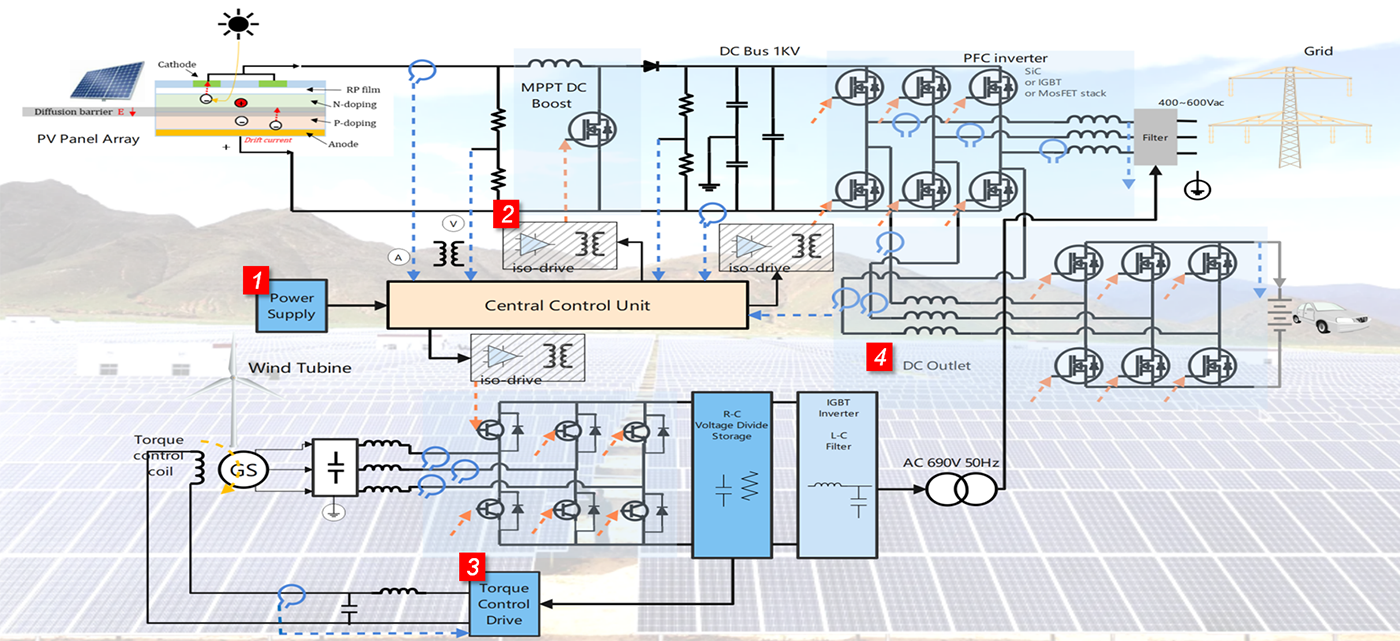
Among different generators of renewable electricity, solar and wind energy are the most developed and popular today. Photovoltaic panels have been widely implemented around the world, especially in some areas or operation environments there is barely a chance to get power source from public grid or simply no grid infrastructure was built there, the easy-to-build and cost-flexible characteristic has made solar power becoming very important for those applications. In wind energy farms, several MWs electricity generated greatly benefits the propagation of carbon neutral so that makes it an important commercial electric power. However, because of the unstable power grades which relies on sunshine duration or wind strength, the conversion efficiency and up feeding to grid control became the very concern for elec-tricity engineering. There will be many sensors and measurement units for power quality and level, that spreading over almost every power stage - from generating to transmitting and then to inverting, those important in-time signals are necessarily supporting the central controllers to make corresponding operations and drive external control gates of different HV or LV switching FETs such as SiCs, IGBTs. Over this kind of electricity application, many huge components or devices are popularly seen - for withstanding high voltages or transients, and they have longer lifespan for stable performance which lower the failure rate of the whole units or system. Also, to fulfill these managing tasks there will have to be implemented with separated power supplies and reliable power distribution to all the functional or actional units. Smaller sizes of components (compared those applied to electrical lines) with reliable operation life and higher withstanding hash environmental shocks would be of suitable options.